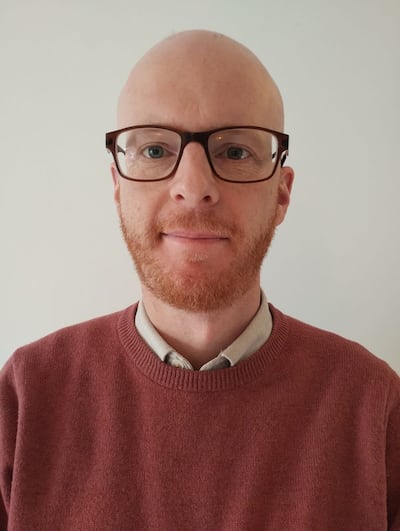Broadcaster Dáithí Ó Sé revealed recently he is an ambassador for a hair transplant clinic in Kerry, after undergoing the process himself and deeming it: “The best decision I’ve ever made.”
He is ready to spread the Gospel, bringing the good news to the desperate hordes of hairless destitutes across the country. While many cooed over his replenished locks, others were more sceptical. Is the Rose of Tralee host yet another victim of the hair transplant military industrial complex?
The positioning of hair restoration as a solution to baldness belies a much deeper problem at the heart of this industry. Baldness is portrayed as a condition that needs to be cured.
But baldness isn’t a disease. It is a natural part of the male experience. Over the last 10 years or so, the seemingly inexorable rise in hair restoration clinics across Ireland is perpetuating an unhelpful stigma.
READ MORE
I see a lot of ads for hair restoration and they all follow the same charitable “change your life!” messaging.
“No more baldness!”
“Freedom from baldness!”
“Balding making you look older?”
I even found one with a picture of a forlorn man, head in hands, pleading with society to throw him a bone. One Irish hair restoration clinic claims in an advertisement that you can “restore your confidence and your lifestyle”, presuming the bald community to be a pitiless bunch of recluses who are scared to leave their bedrooms for fear of judgment.
But I am not convinced that men actually want the magic pill this industry is so desperately selling. The problem is that we are constantly told we need it, and it then becomes a self-fulfilling prophecy. If you keep telling people there is something wrong with them, they will start to believe it. But the truth is difficult to excavate amid this barrage of “lifestyle” management.
Surely the one true friend of anxiety over male pattern baldness is acceptance?
In my single days, I remember engaging in a chat with someone I matched with on Tinder. After the perfunctory small talk she dropped her truth bomb. “Before this goes any further, are you actually as bald as you appear in your profile pics,” she asked, blithely, launching a grenade across the anonymous lines of modern communication.
That exchange was an eye-opener for me, because it happened on a platform that trades on the vulnerabilities of our physical appearance and our sense of vanity. A microcosm of how we perceive beauty. The rise in hair restoration clinics, the large numbers of men jumping on flights to Istanbul for a quick (and cheap) transplant and the way these things are articulated all points to a malignant certitude – we see baldness as something bad and ugly, something that needs to be changed.

Consider how the society magazine RSVP articulated Ó Sé's procedure. “The RTÉ star is now a brand ambassador for the clinic, raising awareness around the various treatment options available . . . for people experiencing hair loss.”
The expression “raising awareness” is usually used in the context of charity or illness while “people experiencing hair loss” suggests a minority group of people who have been forgotten by the health service, but who are truly going through something unbelievably agonising. The only line missing here is, “For just one euro a month, you can change a bald man’s life forever,” while a slow-motion video of a hirsute and benevolent donor pats a little bald man on the head.
What a patronising place this messaging comes from. The bald community is not a group that requires an intervention. The only awareness being raised in this situation is the opportunities for these clinics to make money, preying on the vulnerabilities of men.
Another hair restoration clinic in Ireland ran a TV ad with the following line narrated over inspirational music: “Hair is a natural part of who we are, vital to our self-image.”
In this situation, a medical clinic is telling you that the way your hair looks is intrinsic to how you perceive yourself. But hair isn’t a natural part of who I, or hundreds of thousands of other Irish men, are. In fact, the opposite is true. Hairlessness is a natural part of who we are, and there is nothing wrong with that.
Whether you like his shtick or not, Ó Sé is a role model for middle-aged men. He is charming, handsome and all over the TV, from the Today Show to interviewing the Roses every August. So it matters what causes he chooses to endorse. This is a rare misstep because by jumping on the hair transplant bandwagon he has inadvertently perpetuated the central message of all this: baldness is a problem that requires a solution. It isn’t something that can be accepted or loved.

Critics of my argument will suggest “each to their own”, that just because restoration was the correct solution for Ó Sé doesn’t mean it is right for everyone. But as a brand ambassador, he is necessarily imposing the world view of the hair transplant industry on the rest of us. He is in a position of significant power and influence and the message is stigmatising.
My favourite part of the public relations strategy of some hair restoration clinics? Some offer gift vouchers. I can just imagine giving one to an unsuspecting relative on Christmas morning . . .
“Happy Christmas, now go get that desperate head of yours sorted out on me!”











